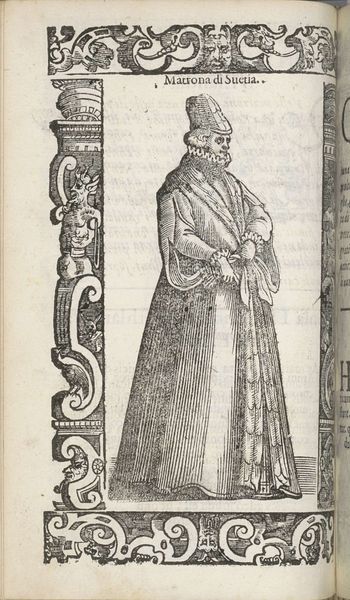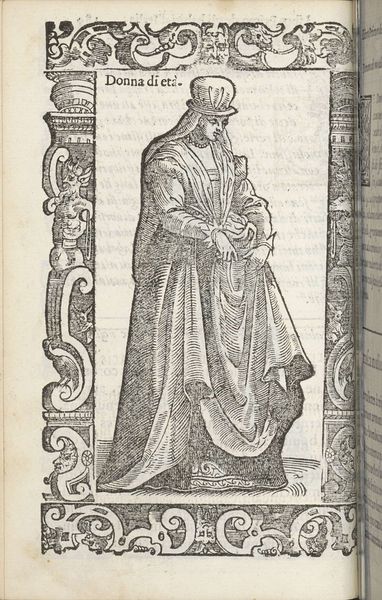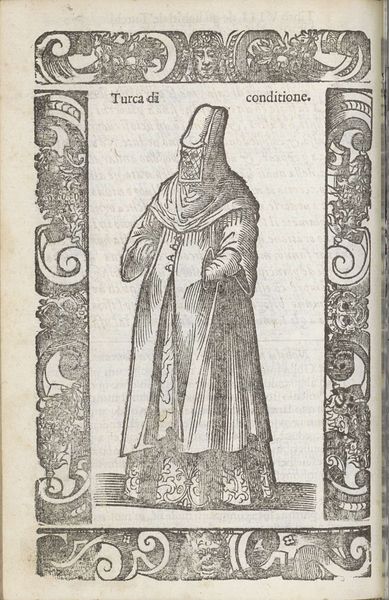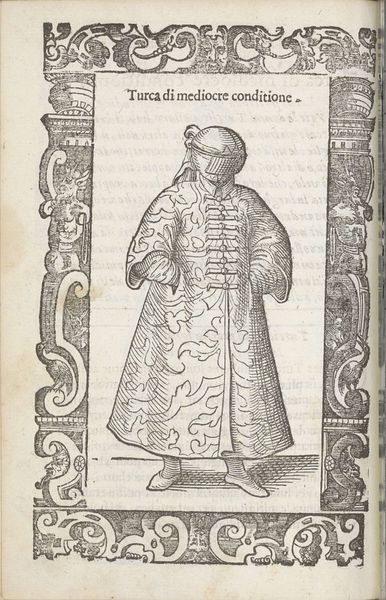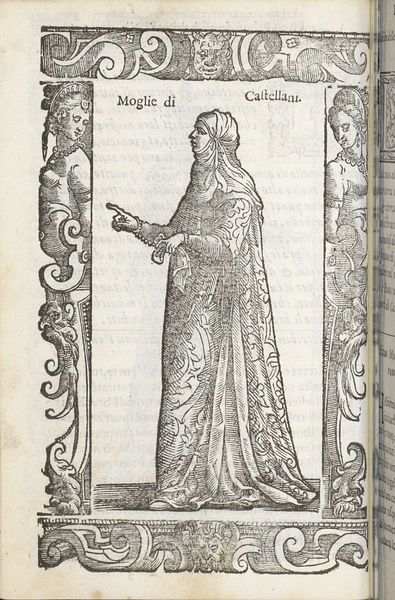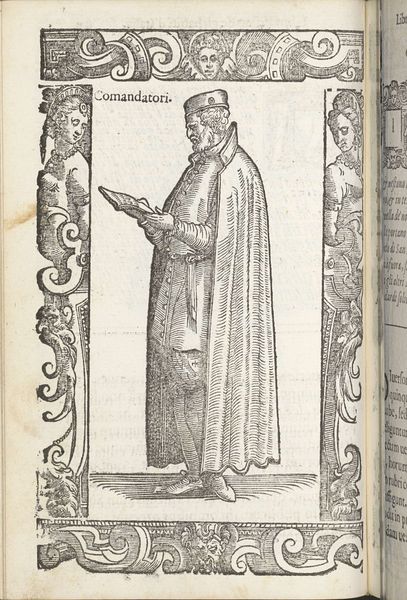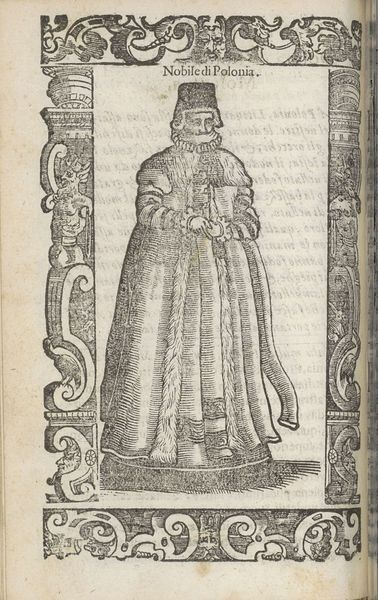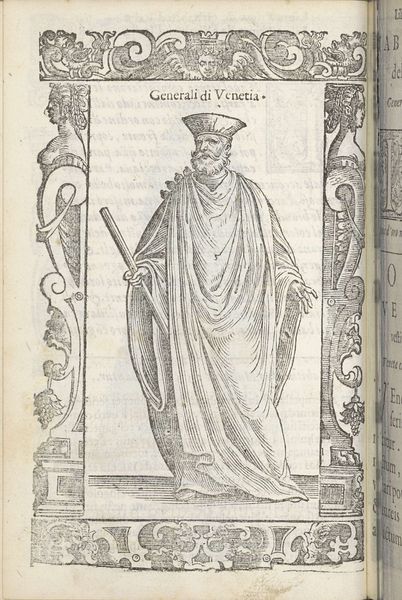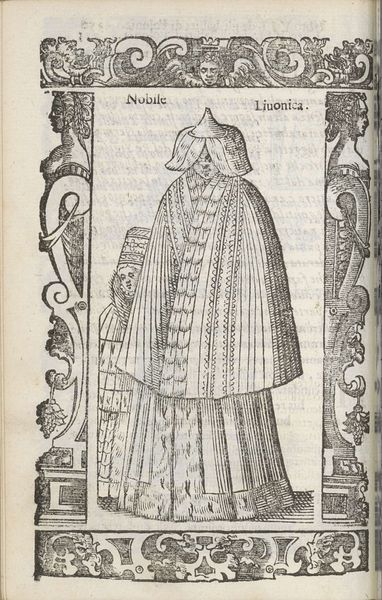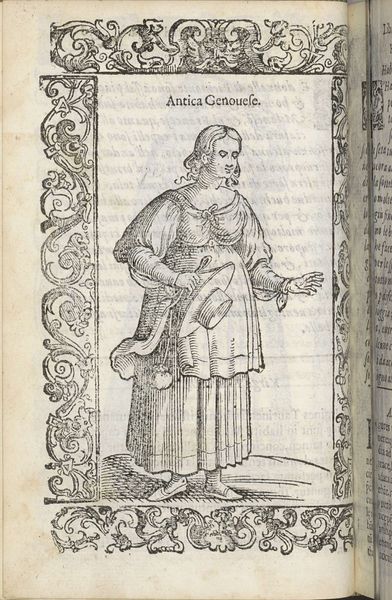
drawing, pen, engraving
#
portrait
#
drawing
#
aged paper
#
medieval
#
pen drawing
#
pen sketch
#
old engraving style
#
sketch book
#
figuration
#
personal sketchbook
#
pen-ink sketch
#
pen work
#
sketchbook drawing
#
pen
#
sketchbook art
#
engraving
Dimensions: height 167 mm, width 125 mm
Copyright: Rijks Museum: Open Domain
Editor: So, this is "Matrona nobile d’Augusta," a pen and ink drawing by Christoph Krieger from 1598. The texture of the aged paper gives it such a weighty feel. How would you approach analyzing this portrait? Curator: Given its materiality and context, I see a rich narrative about the production and consumption of imagery in the late 16th century. Consider the process: Krieger used pen and ink, relatively accessible materials. This suggests a wider distribution of images beyond the elite. Who was his audience, and what did the relative affordability of engravings mean for social messaging? Editor: That's interesting, I hadn't thought about accessibility. So, the choice of pen and ink democratizes art, in a way? Curator: Exactly. This isn't a lavish oil painting commissioned by royalty. This drawing, and engravings like it, circulated information, fashion, and ideas to a broader segment of society. The 'Matrona nobile d'Augusta' presents a constructed image of nobility. But, we should ask, for whose consumption and with what purpose? The labour involved in the multiple prints speaks volumes about the intention of dissemination. Editor: The decorative frame also stands out – almost like a printed page. What about the contrast between the detailed frame and the somewhat simpler figure? Curator: It's crucial! The contrast showcases different artisanal skills – the frame perhaps by a more specialized workshop. The figure, while detailed, could have been replicated faster for wider consumption. It reflects divisions of labor, different qualities of paper, and even the intended market. Does this speak of a print made for educational purposes? A popular "collectible?" Editor: Thinking about it this way, the material components really shape our understanding. The production isn't just about aesthetics, but also about social and economic forces. Curator: Precisely. It allows us to question traditional hierarchies between art and craft, thinking instead about labor, materiality, and the circulation of images within a specific cultural landscape. Editor: That gives me a whole new perspective! I appreciate you drawing my attention to those considerations. Curator: And I'm glad you're considering these under-explored dynamics of creation!
Comments
No comments
Be the first to comment and join the conversation on the ultimate creative platform.
